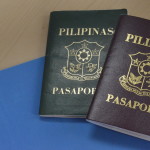It’s become a common practice for people to filter their photos. This is thanks to apps like Snapchat and Instagram, both of which have software that gives quick and varied ways of making a picture truly unique before it’s posted online. The question is: can you use a filter on your passport photo? Here’s what you need to know as you prepare to snap your picture.
Are filters allowed?
No, unfortunately not. While this might be bad news for some people who love nothing more than adding a filter their photos, the passport guidelines are pretty clear that the image must be a ‘true likeness’ of the person in the picture. This means that even the slightest tint can flag up questions over whether the photo is accurate enough to be processed along with a passport application.
Has this been tested?
You’re not the first person to question putting a filter on your passport photo. In fact, the passport office was so overrun with filtered photos in 2017 that it had to release further guidance on the matter. A spokesperson said: “The latest Snapchat trend is perfect for happy, funny social media posts, but we must remind the public that these photographs are entirely unsuitable from an international security perspective.”
What can you do?
You’re probably keen to use a filter so that you can guarantee you’re happy with your passport photo. This is understandable. Luckily, this can still be achieved now that you can take your photos at home. It allows you more opportunity to take several images and inspect them all thoroughly to lock down one that you’re happy with. This beats visiting a photo booth, only to find yourself rushed to use the facility and move on.
One last step…
Once you have taken a picture that you’re happy with, your safest bet is to then send it over to Paspic. You’ll be given assurance that your image meets the official guidelines before you send it off with your passport application. In addition, you’ll also be able to get the hard copies posted straight to your address.


